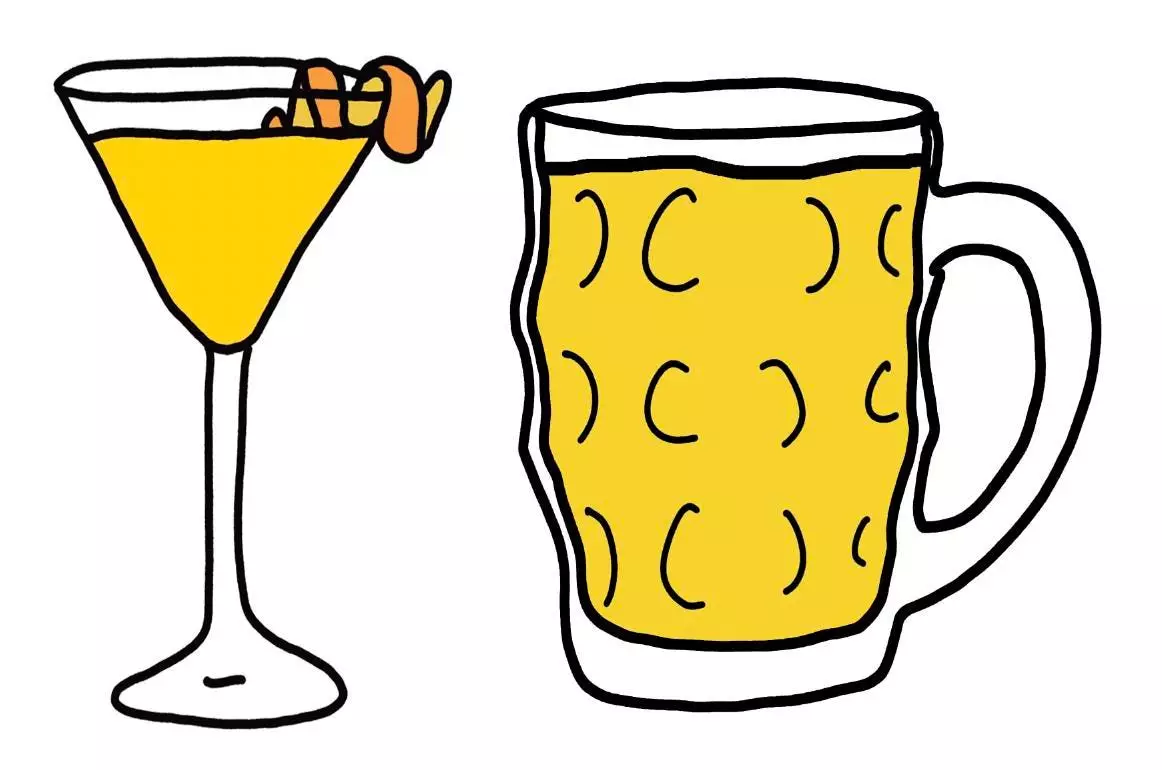Beer, long considered a casual, social beverage, holds untapped potential for the creative mixologist willing to innovate. It’s easy to dismiss beer as simply the default choice for tailgates or relaxed gatherings, yet underneath its unassuming exterior lies a versatility that can revolutionize cocktail crafting. By delving into beer’s diverse flavor profiles—ranging from crisp citrus and floral notes to deep chocolate and roasted bitterness—bartenders and enthusiasts alike can unlock a new realm of sensory experiences. Beer’s ability to introduce both texture and nuanced aromas makes it an ideal component for elevating traditional cocktails and designing novel drinks that surprise and delight.
This shift from beer as mere accompaniment to it being a core ingredient signals a maturation in the craft cocktail scene. The key lies in understanding and respecting beer’s multifaceted nature. Each style—from tart Berliner Weisse to rich barleywine—serves a unique role, capable of adding depth and complexity to beverages when used thoughtfully. This approach demands a critical eye, not just in choosing the right beer but also in considering how its inherent qualities can complement other ingredients. In doing so, beer moves from being a supporting act to a leading character in the story of a well-balanced cocktail.
The Science and Artistic Touch in Beer Cocktail Crafting
Creating compelling beer cocktails is both an analytical process and an artistic endeavor. A critical analysis of beer’s alcohol content, aroma, bitterness, and mouthfeel is essential before experimenting. For example, a high-IBU IPA with citrus and pine notes pairs nicely with spirits that have a similar profile, like certain gins or flavored vodkas, creating harmony rather than chaos. Conversely, a delicate wheat beer with subtle sweetness can serve as a base for lighter, refreshing mocktails, making it versatile across a broad spectrum of drink types.
Beyond basic flavor matching, the manipulation of beer’s texture and carbonation opens new avenues for creativity. Champagne-like carbonation in Belgian saisons or high-spirited, malty notes in a barleywine can serve as the backbone of handcrafted cocktails. The carbonation level influences mouthfeel and aroma dispersal, adding layers of sensory engagement. A seasoned mixologist knows that balancing these elements requires a discerning palate and a willingness to experiment. Using non-alcoholic beers pushes this experimentation further, enabling the creation of mocktails that are as satisfying and complex as their alcoholic counterparts—an essential move in modern cocktail service.
Critically speaking, one must also be aware of the flavor spectrum in beer, preventing over-reliance on single styles or overpowering bitterness, which can dominate the palate. Techniques like tempering bitterness with simple syrup or fruit juices are vital in crafting balanced drinks. In essence, the art of beer cocktails is not only about adding beer but also about understanding how to elevate it—using it as a brushstroke in a larger artistic masterpiece.
Practical Applications and Bold Ideas for Beer-Infused Mixology
Inspired by innovative bartenders and craft enthusiasts, a handful of inventive recipes exemplify how beer can transform cocktails from mundane to mesmerizing. A refreshing beer-based variation of the classic Greyhound, for instance, combines vodka and grapefruit juice with a splash of session IPA. This simple-to-batch drink showcases the synergy between citrus and hops, delivering a tangy, effervescent experience perfect for casual gatherings. Its success hinges on smart ingredient choice and precise proportions, underscoring the importance of a thoughtful approach in beer cocktail creation.
Another bold concept involves using tropical beers like Berliner Weisse or gose to craft fruity, vibrant punches. Mixing lychee and lime juice with a tart, fruited beer creates a drink that encapsulates summer—light, flavorful, and brimming with complexity. Such drinks push the boundaries of traditional cocktails, emphasizing the playful potential of beer as a primary ingredient. They also challenge bartenders to think outside the box, integrating local breweries’ offerings to construct unique, personalized menus.
However, the true ingenuity lies in the willingness to experiment beyond recipes. Using beer in unexpected ways—like a stout float or an Indian Pale Ale-infused shrub—can lead to surprising flavor combinations that delight the palate. These ventures require a critical sensibility—no reckless mixing—and an understanding of how beer’s aroma compounds and mouthfeel will evolve when paired with spirits, fruits, and spices. When approached with curiosity and precision, beer cocktails transcend their reputation as casual quenchers and become statements of craftsmanship and daring innovation.
Challenging Conventions and Embracing the Future of Beer Cocktails
The evolution of beer in mixology is not merely a passing trend but a fundamental shift in how drinks are conceptualized. It demands that both enthusiasts and professionals question existing paradigms and embrace a more holistic view of flavor, texture, and context. The traditional boundaries of what constitutes a sophisticated cocktail are expanding, and beer—once an afterthought—can now stake its claim alongside gin, whiskey, and rum as an essential ingredient.
Daring to challenge conventions requires confidence, a critical eye, and a passion for experimentation. The modern cocktail enthusiast should view beer not just as a partner but as a creative force capable of redefining the drinking experience. By carefully selecting styles, understanding the science behind carbonation and bitterness, and thoughtfully pairing beer with complementary ingredients, mixologists can craft drinks that are not only innovative but also deeply satisfying.
Furthermore, as consumer palates evolve and demand more complex, layered flavors, beer cocktails are positioned uniquely to meet these desires. They offer a platform for local breweries to shine, inspire sustainability through creative use of regional products, and foster a new appreciation for beer’s intricate character. Ultimately, the future of beer cocktails hinges on an openness to experimentation—a bold pursuit of flavor harmony and structural sophistication that challenges entrenched notions and inspires a new generation of drinkers to see beer through a fresh, artful lens.


Leave a Reply